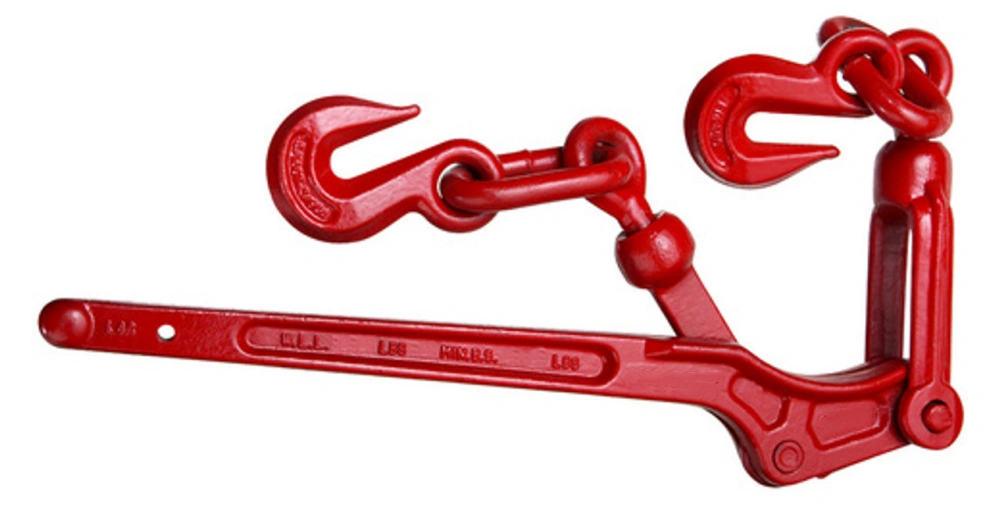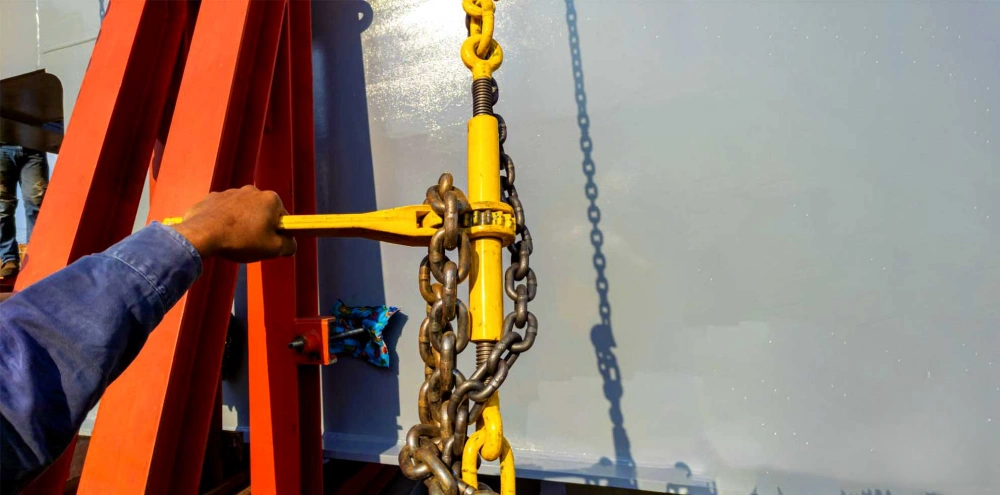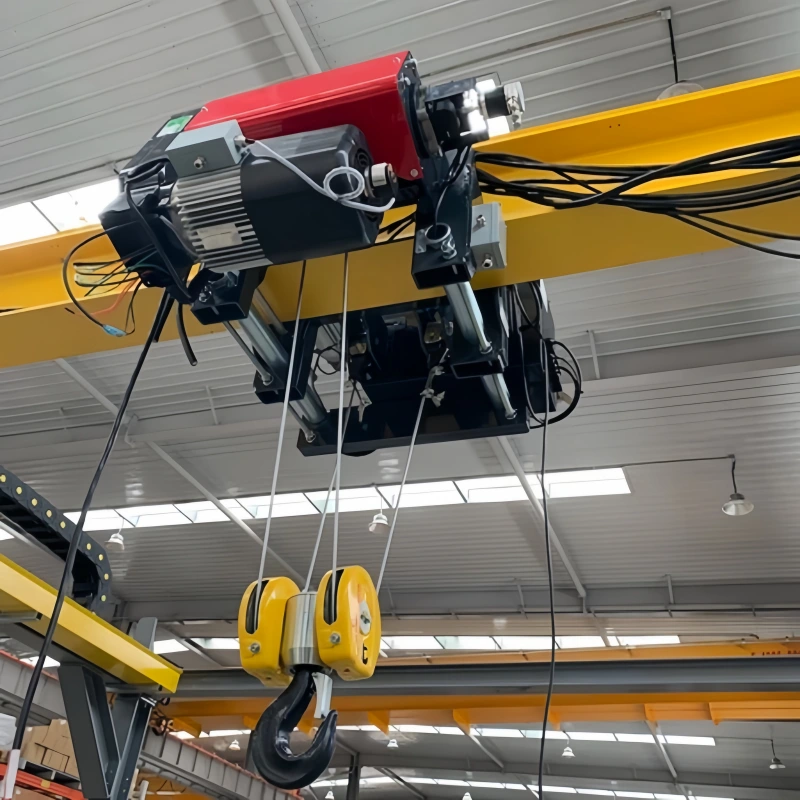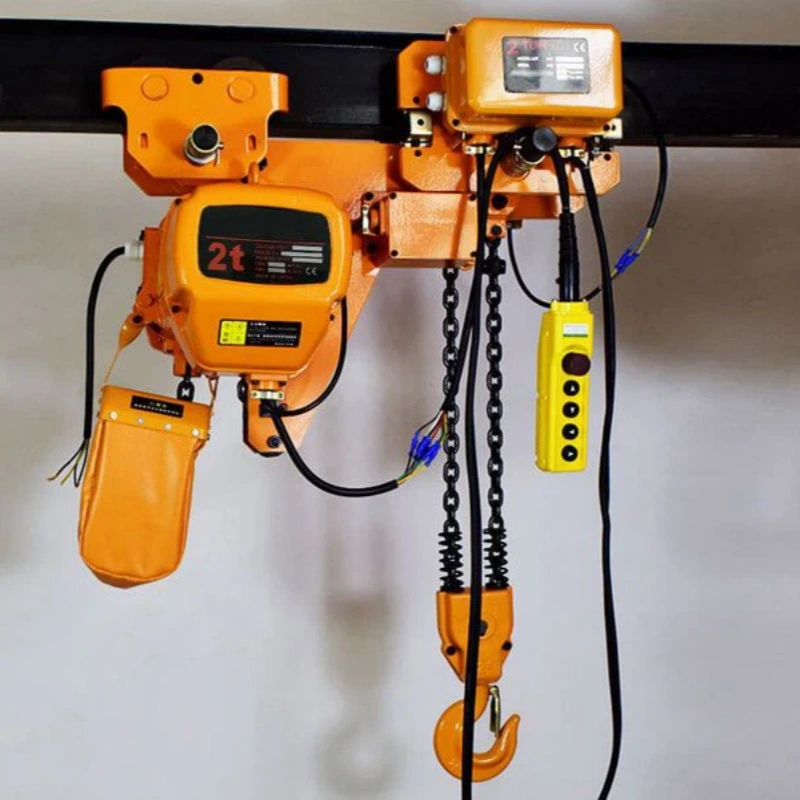You need to know how to use a load binder safely and effectively to protect your cargo and ensure safety on the road. Using the right technique prevents load shifts and keeps you compliant with regulations.
Powerful Machinery’s Load Binders offer simple operation and robust construction, supporting your work in demanding environments. Proper securement not only protects your cargo but also saves lives by keeping loads firmly in place and improving transportation safety.
Key Takeaways
Always inspect your load binder before each use. Look for damage or wear to ensure safety during transport.
Choose the right load binder based on your cargo’s weight and size. This ensures secure transport and compliance with regulations.
Use proper techniques when tightening and releasing load binders. Stand clear of the handle’s path to avoid injury.
Regularly check the tension of your load binders during transport. This helps prevent cargo shifting and enhances safety.
Wear appropriate personal protective equipment (PPE) when handling load binders. This protects you from potential injuries.
What Is a Load Binder?

A load binder is a mechanical device that helps you tighten and secure chains or straps holding cargo in place during transport. You use it to apply tension, maintain pressure, and allow for quick release when unloading. Load binders play a critical role in keeping your cargo stable and safe on the road.
Definition of Load Binder | Primary Functions in Cargo Securement |
|---|---|
A mechanical device used to tighten and secure chains or straps holding cargo in place during transport. | 1. Applying tension to chains or straps |
Powerful Machinery Load Binders Overview
You can rely on Powerful Machinery Load Binders for heavy-duty cargo securement. These binders feature robust construction and advanced safety features, making them ideal for demanding jobs.
The forged steel body and heat-treated design provide maximum strength and durability. You benefit from rust-resistant finishes and powder-coated surfaces, which help the binders withstand harsh environments.
Feature | Description |
|---|---|
Heavy-Duty Construction | Crafted from high-quality materials to handle tough jobs and withstand stress and pressure. |
Durability | Built to last with rust-resistant finishes for prolonged use in demanding environments. |
Adjustable Lengths | Offers adjustable lengths for securing both light and heavy loads. |
Easy to Use | Designed for simplicity, allowing quick securing and releasing of loads. |
Versatility | Available in various styles for multiple applications, including trucks and trailers. |
Compliance with Regulations | Helps ensure compliance with DOT regulations regarding cargo security. |
Working Load Limit | 13,000 lbs for specific models, ensuring safe transport of heavy cargo. |
Min Break Strength | 46,000 lbs, assuring strength under high forces. |
Forged Steel Body | Maximum strength and durability against breaking. |
Smooth Ratcheting Mechanism | Allows precise tension adjustments with reduced risk of recoil. |
Grab Hooks | Securely attach to chain links for dependable performance. |
Heat-Treated Design | Provides resistance to wear for long-term use. |
Powder-Coated Finish | Scratch-resistant and heat-resistant for durability. |
Industry Compliance | Meets FMCSA/DOT standards and WSTDA T-6 recommendations. |
You also gain peace of mind knowing that Powerful Machinery Load Binders meet strict international standards, such as EN12195-3, AS/NZS 4344, ISO, and CE certifications.
Why Proper Use Matters?
When you use a load binder correctly, you protect yourself and others from serious risks. Improper use can cause injuries, especially with lever binders that require significant force.
If you use a cheater bar, the handle may snap back and cause harm. Ratchet binders offer a safer alternative, as they require less force and provide a gradual release.
Tip: Always check your binder for wear and tear before each use. Keep your head and body out of the handle’s path, and never use a cheater bar.
Proper technique reduces the chance of cargo shifting or falling. Poor fastening methods account for nearly 30% of load-related traffic accidents in some regions. By using load binders as intended, you keep your cargo secure and comply with legal requirements.
You also help prevent accidents and ensure a safer journey for everyone on the road.
How to Use a Load Binder?
Learning how to use a load binder correctly ensures your cargo stays secure and you stay safe on the job. Follow these steps to prepare, attach, bind, tighten, and release your load binder with confidence.
Preparation and Inspection
Before you start, always inspect your equipment. Powerful Machinery load binders are built for durability, but you must check every component before each use. This step prevents accidents and keeps your cargo secure.
Step | Description |
|---|---|
1 | Check for visible damage or deformation on the binder. Replace if deformed or broken. |
2 | Inspect hooks and chains for damage. Look for thinning or obvious damage that may reduce strength. |
3 | Ensure ratchet-type binders operate smoothly without sticking. Lubricate or replace if necessary. |
4 | Look for rust or corrosion on chain binders. Clean surface rust, but replace rusted components. |
5 | Verify that the working load limit (WLL) and size indications are visible. Replace if the marks are worn away. |
6 | Conduct a thorough inspection before each use for deformation, cracks, nicks, or gouges. Replace any broken binders immediately. |
You should also check for common defects or wear signs:
Common Defects or Wear Signs | Description |
|---|---|
Worn or Damaged Slings | Inspect for stretched links, nicks, gouges, or cracks in chain slings; broken wires or kinks in wire rope slings; cuts or fraying in synthetic slings. |
Missing or Unreadable Tags | Ensure every sling has a legible identification tag showing its Working Load Limit (WLL) and certification details. |
Bent or Deformed Hardware | Check shackles, hooks, and eyebolts for deformation; replace any showing cracks or unusual wear. |
Improper Load Angles | Calculate load angles correctly to avoid overloading slings; use multi-leg slings for angled lifts. |
Lack of Proof Testing and Certification | Schedule regular proof testing to verify equipment strength and maintain certifications. |
Tip: Always use only certified and undamaged equipment. Powerful Machinery load binders display clear WLL markings and certification tags for your safety.
How to Attach the Chain to the Binder?

Knowing how to attach the chain to the binder is essential for safe cargo securement. Follow these steps to ensure a proper connection:
Inspect your equipment. Look for cracks, bent links, worn hooks, or corrosion. Remove damaged chains from service immediately.
Position the cargo. Make sure the load sits evenly and remains stable before you begin securement.
Attach the chains. Place chains over or through anchor points, making sure sharp edges do not cut into the links.
Apply the binder. Choose a ratchet binder for gradual tension or a lever binder for faster use. Use caution with lever binders.
Tighten securely. Chains should be taut but not overstressed.
Recheck during transport. Inspect tie-downs after the first 80 km of travel and every 150 km or 3 hours after that.
Note: Only one person should operate a lever binder at a time. Always stand on stable ground, tighten by hand, and wear gloves for a better grip.
How to Bind the Load?
To bind the load using a chain binder, you need to follow a systematic approach. Start by stabilizing the load. Make sure it cannot shift or collapse during transport. Use slip-resistant footwear and secure the load from the ground whenever possible. If you must climb, use a three-point system for safety.
Place the chain over the load and connect both ends to secure anchor points.
Attach the binder to the chain, ensuring the hooks fit snugly.
Begin tightening the binder. For ratchet binders, turn the handle until the chain is tight. For lever binders, pull the handle smoothly until the chain is secure.
Check that the chain is taut and the binder is locked in place.
Safety Reminder: Always use proper tools and warn others before throwing straps or chains. Only use undamaged straps and chains to avoid injury.
Tightening and Securing
When you tighten the binder, use a steady, controlled force. Powerful Machinery ratchet binders allow you to adjust tension gradually, reducing the risk of sudden release. Lever binders provide quick operation but require extra caution.
Stand to the side of the handle, not directly in its path.
Use both hands for better control.
Do not use a cheater bar or extension, as this can cause the handle to snap back.
After tightening, double-check that the binder and chain are secure.
Inspect all tie-downs periodically during transport.
Pro Tip: Powerful Machinery binders feature ergonomic handles and smooth ratcheting mechanisms for safer, easier tightening.
Releasing Safely
Releasing a load binder requires as much care as tightening. Improper release can cause the handle to snap back, leading to serious injury.
ACCIDENT | INJURY | RECOMMENDATIONS FOR CORRECTION |
|---|---|---|
The load binder handle snapped back and struck the truck driver’s forehead. | The driver suffered a lacerated forehead and temporary loss of consciousness. | 1. Release the binder handle with care and ensure personnel are clear. 2. Use an open palm to release tension and lean back. 3. Wear appropriate PPE. 4. Consider using a ratchet-type binder for safer release. 5. Park on level ground when unloading. |
To release safely:
Park on level ground.
Stand clear of the handle’s path.
Use an open palm to release tension and lean back as you do so.
Wear gloves and other PPE.
Choose a ratchet binder for safer, more controlled release.
Alert: Never rush the release process. Always check your surroundings and make sure no one stands near the binder handle.
By following these steps, you will master how to use a load binder and keep your cargo secure. Powerful Machinery load binders provide the reliability and safety features you need for every job.
How to Use Chain Binders: Types and Selection
Lever vs Ratchet Binders
When you learn how to use chain binders, you must understand the differences between lever and ratchet binders. Each type offers unique benefits and safety considerations. Lever binders use a simple handle to tighten chains quickly.
You need more physical strength to operate them, and they can store energy in the handle. This energy may cause the handle to snap back when released, which increases the risk of injury.
Ratchet binders use a gear and pawl mechanism, allowing you to tighten chains with less force and greater control. The design reduces built-up tension, making them safer for you and your team.
Feature | Ratchet Binders | Lever Binders |
|---|---|---|
Operation | Requires less pulling force due to the mechanical advantage | Requires more pulling force due to energy storage |
Safety | Safer with less built-up tension and controlled take-up | Less safe due to potential for whiplash and rebound |
Take-up Distance | 8 to 10 inches | Less than 8 inches |
Ease of Use | Slower but steadier loading/unloading | Quicker to operate but riskier |
Maintenance | More complex due to more parts | Easier due to fewer moving parts |
Cost | Generally more expensive | Generally less expensive |
Tip: Ratchet binders offer a locking mechanism that prevents chains from loosening during transport. Lever binders work best for quick jobs or lighter loads, but you must handle them with care.
When you decide how to use chain binders for your cargo, consider the safety and control each type provides. Ratchet binders suit long-haul transport and heavy loads. Lever binders fit short hauls or lighter cargo.
Choosing the Right Powerful Machinery Binder

Selecting the right binder ensures safe and effective cargo securement. You must match the binder to your chain size and load requirements. Powerful Machinery offers a range of binders designed for different chain sizes and working load limits.
Factor | Description |
|---|---|
Size and Weight of Cargo | Choose a binder that matches your cargo’s dimensions and weight. |
Type of Cargo | Select binders based on the cargo’s shape and securing needs. |
Transport Method | Road, rail, or sea transport may require different binder types. |
Working Load Limit (WLL) | Always check the maximum weight your binder can handle. |
Chain Size | Use a binder compatible with your chain size for safe transport. |
Type of Load Binder | Decide between ratchet and lever binders based on your load and safety needs. |
Weakest Link Principle | Ensure your chain and binder strength match your load requirements. |
Chain Size | Compatible Binders |
|---|---|
5/16″–3/8″ | Binder A |
3/8″–1/2″ | Binder B |
1/2″–5/8″ | Binder C |
When you learn how to use chain binders, always inspect your equipment and confirm compatibility. Powerful Machinery binders provide durability, ergonomic handles, and certified safety features. You protect your cargo and maintain compliance by choosing the right binder for each job.
Note: Always follow manufacturer guidelines and check certification tags before each use. This step helps you avoid accidents and ensures reliable performance.
Safety Tips and Common Mistakes
Personal Protective Equipment
You must wear the right personal protective equipment (PPE) every time you handle load binders. Gloves protect your hands from sharp chain links and rough surfaces. Safety glasses shield your eyes from flying debris or sudden movements.
Steel-toed boots keep your feet safe if heavy equipment drops. High-visibility vests help others see you in busy loading zones. Always check your PPE for damage before each use.
Tip: PPE is your first line of defense against injuries. Never skip this step, even for short jobs.
Safe Handling
Safe handling practices reduce the risk of accidents and keep your cargo secure. Follow these steps for the best way to safely secure your cargo:
Inspect the chain binder for damage or defects before use.
Position the binder correctly with the load and anchor points.
Keep the binder centered and apply tension gradually.
Stand on a solid footing while cranking the binder to prevent slips.
Distribute binders evenly across the load and use protective equipment.
Check and retighten the binder and load during transit.
Follow the manufacturer’s instructions for optimal safety.
Step | Why It Matters |
|---|---|
Inspect Equipment | Prevents sudden failures |
Proper Positioning | Ensures even tension |
Solid Footing | Reduces risk of slipping |
Regular Checks | Maintains load stability |
Remember, you control the safety of your worksite by following these steps.
Mistakes to Avoid
Operators often make mistakes that compromise safety and cargo security. You can avoid these errors by staying alert and following best practices:
Do not underestimate the importance of friction. Use anti-slip mats to enhance load restraint.
Avoid incorrect use of tie-down lashings. Keep lashings vertical and check tension with a checklist.
Always stabilize tall loads against rigid structures or use extra lashings.
Never neglect regular checks during transit. Re-tighten lashings after rough roads.
Do not use damaged or inadequate restraint equipment. Inspect and replace worn components before every trip.
🚩 Stay vigilant and double-check your equipment. Small mistakes can lead to big problems on the road.
Legal Requirements and Best Practices
Regulations
You must follow strict regulations when you secure cargo with load binders. These rules protect you, your cargo, and everyone on the road. Different regions set their own requirements, but many share similar safety goals. The table below highlights some of the most important regulations you need to know:
Regulation/Standard | Description | Region |
|---|---|---|
International Maritime Organization (IMO) | Sets safety standards for maritime transport | Global |
International Road Transport Union (IRU) | Establishes guidelines for road transport safety | Global |
OSHA (Occupational Safety and Health Administration) | Mandates safety protocols for load securing equipment | United States |
Local Transportation Authorities | Dictate specifications for loadbinder materials and testing | Varies by region |
Environmental Regulations | Influence the use of eco-friendly materials | Global |
If you fail to comply with these regulations, you risk severe penalties. Here are some possible consequences:
Each violation of the Hazardous Materials Regulations (HMR) can result in a civil penalty of up to $75,000.
For violations after October 1, 2012, penalties can reach $175,000 per violation.
Multiple violations count separately, so fines can add up quickly.
Trucking companies may face significant fines for breaking load securement rules.
You could be held responsible for damages caused by load securement failures, which may lead to costly legal disputes.
Your company’s reputation can suffer, making it harder to attract and keep clients.
Tip: Always check local and international regulations before each trip. Staying compliant helps you avoid fines and keeps your cargo safe.
Industry Standards
You should always use load binders that meet recognized industry standards. These standards ensure your equipment performs reliably and safely under real-world conditions.
The North American Cargo Securement Standard sets the foundation for proper load securement in the United States and Canada. This standard outlines best practices for using load binders and other tie-down equipment.
The North American Cargo Securement Standard provides clear rules for securing cargo, including the use of load binders.
This standard forms the basis for most load securement regulations in North America.
Load securement rules in the United States and Canada follow the guidelines set by this standard.
Following industry standards not only keeps you compliant but also helps you protect your cargo and your business.
Conclusion
You can use load binders safely and effectively by following these best practices:
Inspect your load binders for damage before each use.
Choose load binders rated for your cargo’s weight.
Secure chains with load binders at strong anchor points.
Tighten load binders using the right technique.
Double-check the tension on all load binders.
Use safety features on your load binders.
Release load binders slowly and carefully.
Powerful Machinery load binders deliver reliability and strength. Always follow safety rules and check compliance before every trip.
FAQ
How do you choose the right chain binder for your cargo?
You select a chain binder by matching it to your chain size and the weight of your load. Always check the working load limit. Use a chain binder that meets or exceeds your cargo’s requirements for safe and secure transport.
Can you use any chain with a chain binder?
You must use a chain that matches the chain binder’s specifications. Always check the grade and size. Using the wrong chain can reduce safety and cause failure. Only use chains approved for your specific chain binder.
How often should you inspect your chain binder?
You should inspect your chain binder before every use. Look for cracks, bends, or wear. Regular inspections help you catch problems early. Replace any damaged chain binder immediately to maintain safety.
What is the safest way to tighten a chain binder?
Stand to the side of the handle. Use both hands for control. Tighten the chain binder gradually. Never use a cheater bar. Always double-check that the chain binder and chain are secure before transport.
How do you release a chain binder safely?
Release the chain binder slowly. Stand clear of the handle’s path. Use an open palm and lean back as you release tension. Wear gloves for protection. Always make sure no one stands near the chain binder during release.


